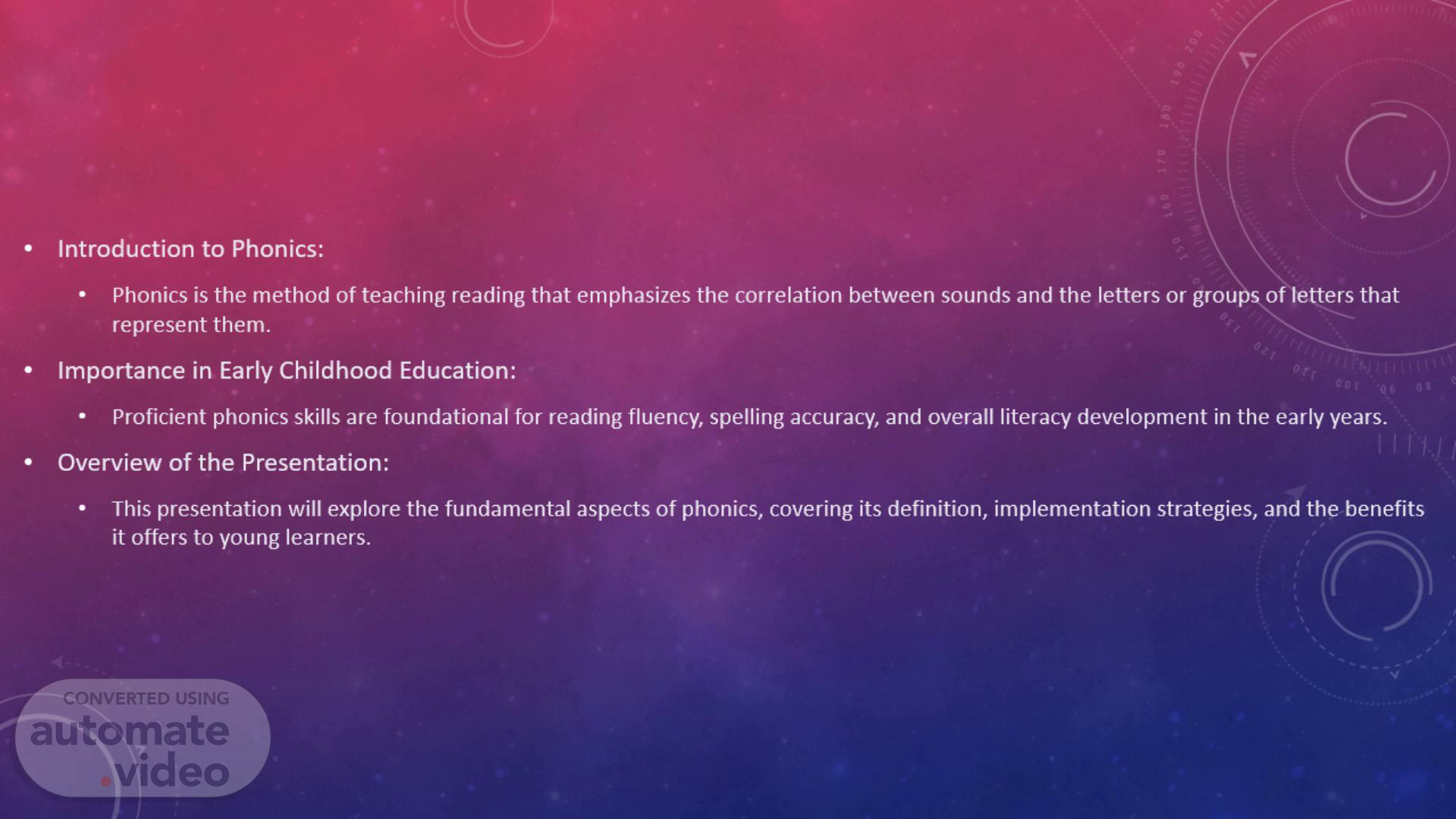
Unlocking Reading Success: The Power of Phonics for Children
Scene 1 (0s)
[Audio] Welcome to our presentation on the power of phonics in unlocking reading success for children. Phonics is a teaching method that connects sounds to the letters or groups of letters that represent them. In the early years of education, phonics is fundamental for developing reading fluency, spelling accuracy, and overall literacy skills. Throughout this presentation, we'll delve into the definition of phonics, explore practical implementation strategies, and discuss the significant benefits it offers to young learners..
Scene 2 (33s)
[Audio] As we dive into the building blocks of reading, it's essential to grasp the definition and significance of phonics. Phonics teaches beginners to read by associating sounds with individual letters or groups of letters. For instance, 'b' represents the sound /b/. Understanding the relationship between phonemes (sounds) and graphemes (written symbols) is crucial. Proficiency in phonics provides a strong foundation for decoding unfamiliar words and accurate spelling, forming the bedrock of successful reading and writing skills..
Scene 3 (1m 11s)
[Audio] Now, let's explore practical strategies for successful phonics instruction. There are two main methods: systematic and synthetic phonics. Systematic phonics involves a structured, sequential approach to teaching sound-letter relationships. Synthetic phonics focuses on blending sounds to read words. Engaging activities play a key role, such as word games, blending exercises, and interactive tools. Integration into the broader curriculum is critical, aligning phonics lessons with reading and writing activities to reinforce learning in meaningful contexts..
Scene 4 (1m 53s)
[Audio] As we discuss the benefits of phonics, it's clear that systematic and consistent instruction leads to improved reading accuracy, fluency, and comprehension. We'll share success stories, illustrating the transformative impact of effective phonics instruction on students' reading and writing abilities. In conclusion, let's recap the key takeaways: the importance of prioritizing phonics in early education and the need for collaboration between educators and parents to provide holistic support for young readers..
Scene 5 (2m 27s)
[Audio] To empower educators and parents, we'll summarize the main points. Remember the importance of phonics, effective instructional methods, and integration into broader literacy education. Collaboration is key, with educators and parents working together to support phonics learning. Additional resources, such as recommended books and online tools, can further aid in effective phonics instruction. For any inquiries or collaboration opportunities, feel free to reach out. Thank you for joining us on this journey to unlock reading success through the power of phonics..